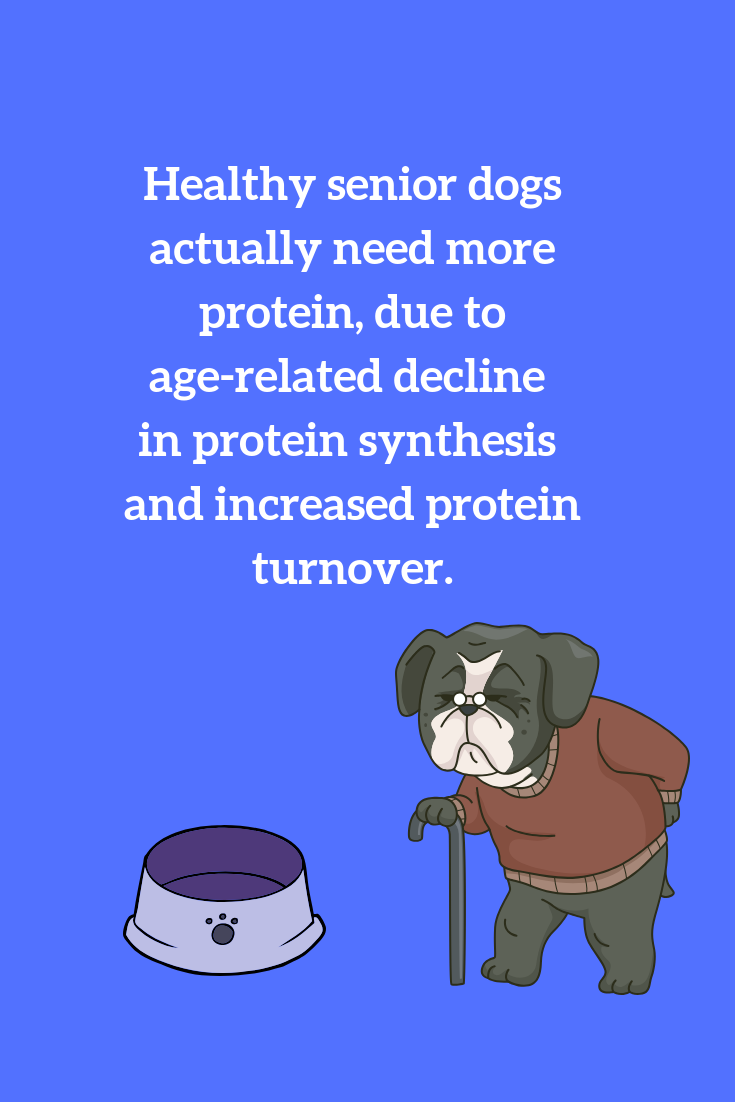Kidney Disease
Should companion pets who have chronic kidney disease eat lower protein diets?
By W. Jean Dodds, DVM on December 11, 2012
Companion pets like dogs and cats with kidney disease or kidney dysfunction should not eat lower protein diets; as this commonly held belief is misleading. As long as the protein source in their diet is of high quality such as white fish and eggs and easily digestible, it helps kidney function and overall body nutrition. It is the lower quality, poorly digestible protein diets (soy, wheat gluten) that tax the kidneys, making them work harder in filtering and clearing metabolic waste products, water, and certain chemicals and drugs from the body.
It has also been shown that feeding a lower phosphorus diet slows the progression of kidney disease. Anywhere from 7 – 18 mg per pound of a dog’s weight is considered a low phosphorus diet. As some foods that are relatively high in phosphorus also provide high quality protein, they can still be fed in moderation, because they are important components of a healthy diet.
Daily phosphorous intake recommended for dogs with chronic renal failure (in early stages):
10 pound dog: 68 – 182 mg (up to 272 mg)
25 pound dog: 170 – 455 mg (up to 682 mg)
50 pound dog: 340 – 900 mg (up to 1364 mg)
75 pound dog: 511 – 1364 mg (up to 2045 mg)
100 pound dog: 680 – 1818 mg (up to 2727 mg)
https://www.hemopet.org/chronic-kidney-disease-dogs/
Mythology of Protein Restriction for Dogs with Reduced Renal Function
“Protein content of a pet food is correlated with dietary phosphorus concentration, and some proteins contain more phosphorus per unit of protein than others (Table 3). Hyperphosphatemia reduces survival in animals with renal disease and is associated with renal secondary hyperparathyroidism;26,27 therefore, in dogs with experimental kidney disease, diets containing elevated protein, but reduced phosphorus, were as beneficial as those with reduced protein and phosphorus”
Commercial renal diets provide more protein (25–55 g/1000 kcal for canine diets) than the recommended allowance for adult dogs (ie, > 25 g/1000 kcal).2
When consumed in appropriate amounts, they should not cause amino acid deficiencies.
Dogs and cats fed these diets have median survival times 2× greater than those fed maintenance diets.26,29,30 However, diets also contain reduced phosphorus and other modifications compared with maintenance diets.
Most renal diets, however, do not meet the AAFCO standard for adult maintenance (51 g/1000 kcal)1 and, therefore, are sold only by veterinary recommendation.
Commercial maintenance foods contain added phosphorus and are, therefore, generally not appropriate for dogs and cats with renal disease.
Home-prepared diets are often used to increase protein, while maintaining reduced phosphorus, when the patient’s condition dictates such an approach.
Some senior and other therapeutic diets have lower phosphorus concentrations (1–2 g/1000 kcal) than many adult maintenance diets, but these concentrations are still higher than those of most therapeutic renal diets (< 1 g/1000 kcal). These diets may be used in select situations.
Ammonia smell on breath
“Kidney disease. Dogs with kidney disease do not properly filter breakdown products of protein into the urine. As a result, those breakdown products build up in the blood. One of them is blood urea nitrogen. A dog with high levels of blood urea nitrogen resulting from compromised kidneys enables a person to smell ammonia on his pet’s breath. Ammonia, a breakdown product of urea, contains nitrogen.”
Treat options for failing kidneys
“feed people food, as long as it has fewer than 150 milligrams of phosphorus per 100 calories and fewer than 100 milligrams of sodium.”
Watermelon, apples, bananas, green beans, baby carrots, broccoli, zucchini, and blueberries all make the cut. (But don’t feed grapes, raisins, or onions, which are toxic to dogs.) NOVEMBER 2019 www.tuftsyourdog.com
You can look up the phosphorus content of any food at the USDA website. e.g. search “ground beef 85 15” or “blueberries”, etc…
Kidney Cleansing Diet for Dysfunction (not failure)
“some older dogs may have reduced digestive efficiency, the quality of the protein that is in the food is very important” [4]
“not only should we not reduce protein for healthy older dogs, research has shown that healthy aging animals benefit from slightly higher levels of dietary protein. They need this to help to support lean body tissue and possibly also to support a healthy immune system.” [5]
"There is a lot of misinformation floating around regarding optimum protein intake for senior dogs (Case et al., 2011; Wannemacher & McCoy, 1966). Many people believe that protein overworks older kidneys and that protein should automatically be decreased in an older dog’s diet. This is false. Dietary protein does not stress or harm the kidneys of otherwise healthy senior dogs. On the contrary, healthy older dogs require slightly more protein. Protein minimizes loss of lean body mass that accompanies the aging process. [2]
“Protein reserves are also important because the body mobilizes protein as a natural part of its response to stress, including disease, infection and injury; therefore, loss of protein reserves inhibits an animal’s ability to respond to stress. In direct opposition to common recommendations, senior dogs actually benefit from moderate to high levels of high quality, readily bioavailable dietary protein” (Case et al., 2011)." [5]




